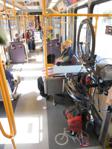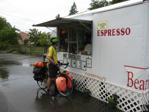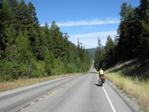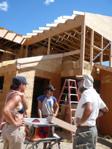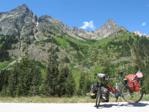It felt strange for me to watch David and friends ride off from Portland and know that I would not be with them.
But I have stayed behind for a couple weeks to begin searching for a job and to work on what will hopefully become an op-ed or otherwise published piece that highlights some of our major findings from this journey. Nicky Phear, our friend from Missoula who teaches at the University of MT, is taking my spot and the three of us will complete the ride into San Francisco. I will catch up to them in Northern California and ride the last week into San Francisco (including the big group ride on Sept. 15th!).
We’ve learned an incredible amount along this journey. As much as we have taught people about the science, impacts and solutions to global warming, we have learned from Americans all across the country. David and I both feel that a national public education campaign on global warming is necessary. There were two main things that led us to this conclusion. The first is that almost no one could explain the most basic concepts around global warming. The second is that almost everyone was open (and often strongly in favor) of the kinds of solutions that we were discussing.
We came to believe that if people had a better understanding of the problem and the kind of solutions that will be most important that we could really begin to move forward. But this will require a broad national education campaign to help all Americans understand the basic key points: global warming is a serious human-created problem, the most significant issue is carbon dioxide, carbon dioxide comes from burning fossil fuels (coal, oil, natural gas), solutions need to deal with the quantity of fossil fuels that we are burning and that solutions (energy conservation, energy efficiency and renewable energy) make good economic and environmental sense. We recognize that there are other important issues (methane, deforestation, etc.) but we feel that the complexity of the problem requires us to focus on the key issues.
How to best convey this information is another issue. It probably isn’t through a technical PowerPoint presentation with bullet points and footnotes. The best example I can think of from the past is the Keep America Beautiful ads from the 70’s. If you don’t remember these you can watch one here. I was about 6 years old when these aired and I still remember them well. Making a national public education campaign happen will require a President who understands the gravity of the issue. We can all take action by asking the Presidential candidates about this and supporting efforts, such as Focus the Nation, to get the candidates to make global warming a priority.







